new posts in all blogs
Viewing Blog: SpeakWell, ReadWell, Most Recent at Top
Results 26 - 50 of 126
A speech, reading & storytelling blog.
Statistics for SpeakWell, ReadWell
Number of Readers that added this blog to their MyJacketFlap:
A couple of weeks ago, I received a review copy of Let’s Make a Difference: We Can Help Protect Mountain Gorillas,
by Gabriella Francine with Solara Vayanian, illustrated by Phil Velikan. This week I had the opportunity to introduce the book to a couple of my speech and language groups and they were glad I did.
Some of my students are working on “g” and “k” sounds at the conversational level. They are able to pronounce these phonemes correctly when naming pictures, but once they are chatting in a more spontaneous manner, they slip back into using “d” for “g” and “t” for “k”. (We call that “fronting” in speech therapy circles, because the kids move their tongue forward instead of back, where it belongs for these sounds.) The children got a lot of practice as we talked about Pi
koe, the baby
gorilla, and his father,
Kun
ga, a “silverbac
k,” named so because of the
gray hair on his bac
k.
In the language group, we had a nice vocabulary lesson with words sprinkled throughout the text like, “foraging,” “species,” and “endangered.” The authors supplied some of the definitions as they used the words in the story.
“ ‘Endangered’ means that if people don’t help them, the mountain gorillas will someday disappear.”
The kids weren’t the only ones to glean information from this book. I didn’t realize there are less than 900 mountain gorillas still living in the wild. Their home is in the cold, misty Virunga mountains of Africa, where they forage each day for leaves, vines, bark, shoots and roots. Gorilla mothers gather food with their babies clinging to their backs. They start looking for food early in the day and then take a nap before searching again. It is no wonder they take a long time to find enough food—
“Because mountain gorillas are so big, they need to eat a lot! Pikoe’s father, Kunga, has to eat 75 pounds of food every day.”
Phil Velikan illustrated what that amount of food might look like: pizza, watermelon, broccoli, chicken, a carton of milk, kabobs, and other edibles, create a mountain of food on a bathroom scale in the middle of a kitchen. The drawing shows a child reaching up to place a peppershaker on top of this pile that is larger than the child himself!
The blend of illustrations and photographs appealed to my students. They loved the expressive faces on the animals, especially the baby gorilla in the veterinarian’s arms. The infant seemed to look into the eyes of the “Gorilla Doctor” with a mixture of trust and a question, “will you take care of me?” That picture captured the hearts of my students, and they decided they’d like to help that little one and all the other (less than) 899 mountain gorillas living in the wild. They don’t want these animals to disappear from our planet.
Fortunately, the book has suggestions on how they can make a difference. The last page lists organizations that are working to protect mountain gorillas and their habitats. We didn’t have time to visit the websites but the kids wanted to share the information with their classmates and families so I sent them off with website addresses.

While I read the book, and we discussed the plight of the Mountain Gorillas, the kids drew some pictures:
Zayd is going public with his. He plans to decorate a box with small gorillas on the side, cut a hole in top for coins, and hang his picture above it on a local restaurant wall.
He certainly took the title of this book to heart.
Let’s Make a Difference: We Can Help Protect Mountain Gorillas. I believe he will.
With Thanksgiving around the corner, our school walls are covered with beautiful fall and holiday-themed artwork. It makes me realize how thankful I am for my artistic coworkers.
One I’m particularly thankful for is Susan Joyer who loves art, loves kids and loves children’s literature. That is a winning combination in my book, in fact that winning combination is in one of my books—The Giant’s Sneeze.
I wrote this story to give my students an entertaining way to practice their “ch” sounds, a fairly common speech error. Since my artistic talents are limited, Susan Joyer volunteered to illustrate the story so we could both use it with our students to encourage pre-reading skills along with articulation.
Speech and reading skills are interdependent and children make leaps toward literacy when those skills are taught together. It so happens, this practice fits in nicely with one of the Common Cores Standards—Reading: Foundational Skills (RF.1.3)where students are expected to,
“Know the spelling-sound correspondences for common consonant digraphs (two letters that represent one sound).”
Like “ch” for example.
I had a chance to read our book to a couple of classes yesterday. It was fun to watch the kids’ enthusiastic response to Susan’s illustrations and to the story. They chimed right in when the giant gave his mighty warning of several “ch” sounds before each sneeze. They laughed at the blustering sneeze-breeze that turned milk into cheese and scattered millions of bees. They were especially entranced with the honey tornado caused by the gusty sneeze when it, “rounded up the scattered bees, and funneled their honey far into the seas.”
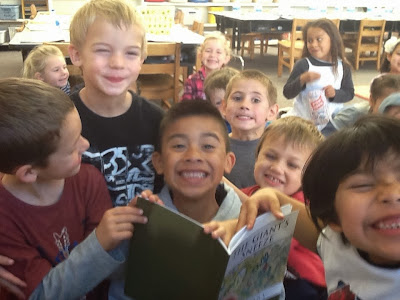 |
| Marcia Douglas' Class - some are showing how to make the "ch" sound. |
Gabe, one of the first grade students, wondered if the giant put bread on his honey. That sparked some lively discussions about what the honey tornado might look like with thick slices of bread stuck to the sides. By the end of the story, the students had no problem identifying the sound represented by “ch” and they had no trouble showing me how to articulate the sound clearly. We’ll probably need to review the information after the holiday break, but that should be an easy job. I’ve already heard students say, “Read it again, read it again!”
Thanksgiving will be here soon. I can almost smell the turkey cooking and apple cider simmering on the stove. There will be ten of us around our table and I’m grateful for each one. When I return to work on the following Monday, fall decorations will start coming down and winter snowflakes and snowmen will begin to make an appearance. My Thanksgiving attitude will linger as I watch the transformation brought about by many of my coworkers who use their artistic talents to create an inviting learning environment for our students, and an inviting place to go to work each day. And I feel especially grateful to Susan Joyer for using her artistic talents to bring The Giant’s Sneeze to life.
Happy Thanksgiving! May it be filled with good food, friends and family.
There was no school on Monday of this week in celebration of Veterans' Day. With the three-day weekend, my husband and I left straight from work on the preceding Friday and headed up the coast for a mini-reunion with friends. Our group rented a house somewhat midway between those furthest north in Washington and those furthest south in California. We arrived late at night and settled into an oceanfront rental for our third annual reunion with three other couples.
We’ve known all but one of these friends for over thirty-years but we lost contact for at least 25 of those years. Our friendships started in Southeast Alaska where we all lived: young, single, and in the beginning stages of new professions.
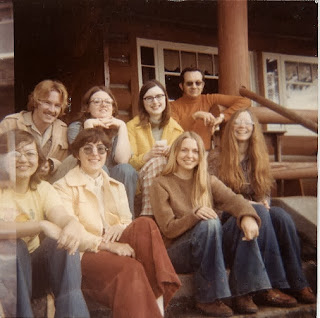 |
One of our friends brought this one, taken the day
my husband and I met! Can you guess which one is me? |
During our reunions we’ve caught up on all the major life events, poured over old photographs and shared our stories. I especially enjoyed reminiscing about the ones we have in common, like our hike along Salmon Creek, visits to the Mendenhall Glacier and camping at Denali.
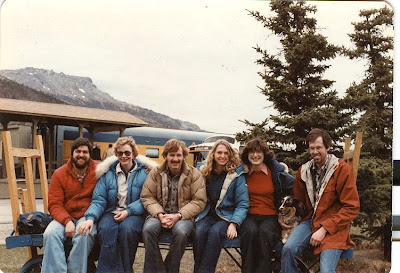 |
| Our trip to Denali |
Phyllis reminded me that during one hike she stepped on a rotting bridge and her leg went right through, landing her in the creek. She started back to work as a classroom teacher with a fat lip and a suspicious principal.
This may seem like an "off-topic" subject for a speech therapy/kidlit bog, but I don't think it is entirely unrelated. In my work, whether I'm teaching students to articulate sounds, formulate a sentence, learn the fundamentals of social language (pragmatics) or increase their vocabulary, one of my ultimate goals is to help them become better communicators so they can have healthy long-term relationships and so that they can tell their own stories, the stories of their lives.
This past week I haven’t had a chance to read books with the kids. Report cards go home next week (along with IEP progress reports) so I’ve been busy testing and writing reports. It seems somewhat tedious but the time is well spent. I can see tremendous growth in some students and it is obvious, by their smiles and the glint in their eyes, they recognize their growth. A couple of the students, who were almost ready to be dismissed from speech at the end of last year, are now fully ready.
I have mixed feelings about letting them go, but it is time to do so. I feel good knowing their speech and language skills have grown stronger and my hope is that these new skills will help them form friendships like those I cherish. Perhaps, one day, they’ll enjoy reunions with old friends and be able to share life-enriching stories of their own.
I had a new student in speech this week. When I went to his classroom to pick him up for his first session, I called his name and he shrank. His shoulders rolled forward, he tucked in his chin and tried very hard to disappear into the crowd of kindergartners sitting on the carpet at their teacher’s feet. I gave him what I thought was an encouraging smile but it wasn’t encouraging enough—his eyes widened in apprehension, then melted into a pleading look as he turned toward his teacher, obviously hoping she’d rescue him. She didn’t. But she introduced us and reassured him that a lot of kids love going to speech. After I spoke a few kind words and found a friend to walk with him, he left with his new speech group and trudged along to my classroom.
Fortunately, I had an enticing book on my desk, just waiting for the right moment and a fitting group of kids for its introduction. I’d found both, so I scrapped my original plans and grabbed Robots, Robots Everywhere! by Sue Fliess, illustrated by Bob Staake.
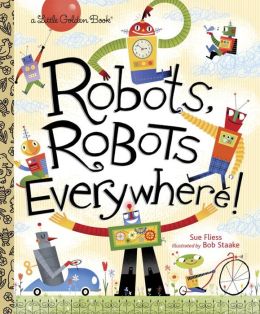
I thought the cheery illustrations and catchy rhymes might help this new student forget his nervousness. I was right; the worry lines on his forehead softened the moment he looked at the cover of the book and they disappeared entirely by the time I’d finished reading a few pages,
On the ground
and in the air,
Robots, robots
everywhere!
Up in space,
Beneath the seas,
Robots make discoveries.
I’d forgotten how appealing robots are to young children. The kids moved in close to examine each illustration. Soon, this reluctant child leaned against my side so he could get a better look at the pages. It wasn’t long before he was pointing and laughing and talking about the kind of robot he wants to own. All of the kids had ideas to share. Jose wants a double-headed robot that climbs trees. Olivya wants a pumpkin-robot that glows. Enrique wants a tiny one “about this big” he circled his hand around a walnut-sized pocket of air. His robot will go on water, land, and in the sky.
My students made a scavenger hunt out of the book and scanned the pages for familiar shapes—squares, circles, rectangles, triangles, ovals, and ice-cream-cone-shapes. Their enthusiasm was contagious. I snatched my box of paper-scraps and quickly cut out a few similar shapes. We made collages, building our own robots as we built vocabulary.
I’ve known for a while, knowledge of shapes is an important foundation for growing math skills, but I was curious about its place in the curriculum so later in the day, I searched the Common Core Standards to find out where it’s listed. Sure enough, the first two kindergarten geometry standards require students to learn the names of various shapes. Our vocabulary lesson and Ms. Fliess’ book was a perfect fit for these kindergarten mathematicians.
The next day, when I went to pick up my new student, he practically bolted from his classroom. He could hardly wait to see if his robot collage was dry. He didn’t trudge to my room; he scurried along on imaginary robot feet, smiling all the way. It was no surprise to me. Over and over, I’ve seen what an appealing book can do to reach a reluctant child, whether it is a reluctance to leave a familiar environment, face a challenge or learn a new skill; books often ease the way into comfort and open minds to learning just as Robots, Robots Everywhere! did for this student.
When I asked a group of first graders what they thought a person might mean by saying, “you eat like a bird,” all four heads dipped down to the table. With hands in their laps, they bobbed and “pecked” at imaginary seeds on imaginary ground. They were a bit surprised when I opened Sandy Donovan’s book, Until the Cows Come Home, illustrated by Aaron Blecha, and read page 26 where they learned this idiom means to eat a small amount of food.
They were even more surprised when they discovered how much a bird typically eats; a one-pound bird is likely to eat about a pound of food each day. If my students actually ate like birds, they would eat about 45 pounds before turning in tonight!
These facts may not be new to you, but some of the information in the book was new to me. For example, did you know the phrase “don’t let the cat out of the bag” began back in the Middle Ages? I didn’t. According to Ms. Donovan, since cats were cheap and pigs were expensive,
“Sellers at marketplaces used cats wrapped up in fabric bags to try to trick buyers. The buyers thought they were buying a pig. The sellers would take their money and give them a bag with an animal squirming around inside.”
If they let the cat out of the bag before they returned home, they would discover the secret.
Ms. Donovan’s book defines idioms as “phrases that mean something different from what you might think they mean.” After reading several examples, I turned to a page with an illustration of a monkey clinging to a frustrated, freckle-faced boy and said, “The phrase, monkey on your back” is an____?” I paused to let the kids finish the sentence and Hailey called out, “Idiot!” The others agreed before I had a chance to correct her mistake.
Landen was so intrigued by the illustration he decided to demonstrate how you might get a monkey off your back. First he wrapped his arms around his body, then changed positions to spread the fingers of one hand on his cheek and used his other hand to peel off the fingers, one by one. He explained how he’d peel the toes off too, and then twirl so the monkey would fly off. He used excellent descriptive language as he expounded on the process and by the time he finished, it was easy for the other students to understand the origins of this idiom. I tuned back to the book and read,
“What does a monkey have to do with an ongoing problem? Well, let’s think about it. If you had a monkey on your back, it would be really hard to get it off, right? Monkeys have those long arms. They could wrap their arms around your neck. You might try to shake them off, but they’d cling on. . . That’s why people use the phrase “monkey on your back” to refer to problems that won’t go away.”
Idioms are confusing to many of my students and they are especially baffling to kids on the autism spectrum who are very literal in their thinking. I remember one precocious sixth grade student who had autism. After a few lessons on idioms, Alex came into my speech room and said, “Did you notice, it’s raining cats and dogs outside. I hope we can have lunch soon because, I’m as hungry as a horse.” He was very pleased with himself and I was happy as a clam to hear him using the idioms appropriately. Alex would have enjoyed Until the Cows Come Home. It is packed with information and he loved collecting facts.
With the Common Core Standards’ new emphasis on nonfiction, this book would make a nice addition to any elementary school library. And, though I’ve been reading it to first and second grade students, it is laying the foundations for a fourth grade language standard (L.4.5) where students are expected to “Recognize and explain the meaning of common idioms, adages, and proverbs.” My younger students can already explain a few, thanks to Ms. Donovan’s book. If you’d like to introduce your children or students to idioms, there is no need to hold your horses, just trot over to your local bookstore or library and pick this one up.
We’ve been on vacation this week so I have no stories to share from the speech room. Instead, I’ll share a few photos from our trip to Taylorsville, California.
I hope you are enjoying the fall season!
Creepy Carrotscrept into my speech room this week. Actually, it practically bounded into my classroom due to several pleading students who remembered the book from last year and couldn’t imagine moving into the fall season without it. They started requesting the story about the third week of school and asked each day until I secured a copy from our local library.
Last year, the kids begged for Halloween stories beginning early in September. This year, they were more specific. Creepy Carrots by Aaron Reynolds, illustrated by Peter Brown, was their number one request. It may not be a traditional Halloween tale, but it’s fitting for fall and those carrots, with their jack-o-lantern faces, make it a perfect match for the occasion.
The students decided to create their own creepy carrots—take a look:
Emanuel expanded to another vegetable and sketched a cranky cabbage:
With the Common Core Standards on my mind (and in numerous conversations around our school campus) I’ve been looking for ways to incorporate them into speech and language sessions. I didn’t have to look far when I pulled Creepy Carrots from the shelf. The fifth Common Core Language Standard asks kindergarten students to “sort common objects into categories.” If you follow this standard, you’ll find by first grade students are expected to “sort words into categories” and by second grade they need to “identify real-life connections between words and their use (e.g. describe foods that are spicy or juicy).” After reading this story, my students sorted objects and words into categories (fruits and vegetables,) suggested some delicious describing words, put them together, threw in a few alliterations and came up with Crazy Cucumbers, Leggy lemons, Lazy lettuce, and Bumpy-bunny bananas.
Joden got especially creative and suggested a “Tow-truck tomato.” He didn’t stop with the name but added a few descriptions to go with it. “It has a slice of tomato for a door and four-hundred slices to make the back. It uses hay for fuel – no gas. A tomato drives the truck. He has a green Mohawk made of leaves. He drives around in circles catching rabbits.”
Joden seems to be working his way up this standard. In no time at all, he’ll hit the sixth grade level where students are expected to understand personification.
I realize there are pros and cons to the Common Core Standards, but I like the way one grade-level standard paves the way for the next, building skill upon skill until at last (as stated on the CCSS website,) the students “develop the skills in reading, writing, speaking, and listening that are the foundation for any creative and purposeful expression in language.”
If we are successful in helping our students reach that goal, this creative expression just might lead to some captivating stories for future generations. And perhaps some of them will be as delightful as Creepy Carrots!
If you had walked by my speech room early in the week, you would have heard a gaggle of giggles and a riotous roar of laugher as I read, Cowpoke Clyde and Dirty Dawg by Lori Mortensen, illustrated by Michael Allen Austin.
It’s a good thing my room is somewhat removed from other classrooms on our campus. This lively tale had the kids hopping out of their seats crying, “wait, wait, wait, wait!” each time I tried to turn a page. They didn’t want to miss a single detail.
They loved Cowpoke Clyde’s bony face and spindly body. They moved in close to point out the terrified, open-beaked expression on the rooster as Dirty Dawg shot through the chicken coop. When we came to a close-up of the hog snapping the rope to escape Cowpoke Clyde (who landed on his derriere—feet up and hat flying), the kids puffed out their own cheeks in imitation of the bloated hog. They couldn’t hold their breath for long—air burst from their mouths in snorting chuckles. All this fun came from Dirty Dawg trying to escape the dreaded bath.
Clyde set his hat and grabbed a rope,
filled some buckets, snatched the soap.
but right before he sprung his plan,
ol’ Dawg woke up, and off he ran.
The kids caught on to the rhyming scheme and tried to finish the couplets every time I paused to give them a chance. The author prompted such predictions with several clever page turns.
“Gadzooks!” yelled Clyde. “This ain’t no joke.
Come back here, boy and get yer soak!”
But Dawg ignored his mighty pleas.
Instead Dawg left a trail of . . .
“PEAS!” the kids all shouted. They were quick to change their answer when I turned the page and, instead of peas rolling along behind him, they saw Dawg with his hind leg up, scratching his ear. After that, they were like eager detectives, scouring each spread for clues. They noticed several but they didn’t notice the fact that they were working on a Common Core Standard. One of the foundational reading standards for kindergarten students is to “recognize and produce rhyming words.”
I used the same book with a group of second graders and they enjoyed the story as much as the younger kids. They had no trouble at all describing Dawg’s response to the idea of a bath, or Clyde’s response to that ornery Dawg. By doing so, they were working on the third reading standard for literature: “Describe how characters in a story respond to major events and challenges.” The challenges in the story were obvious but it was no challenge for me to keep these students fully engaged.
And it was easy to slip in a nod to the first Language Standard where students are expected to “Demonstrate command of the conventions of standard English grammar and usage when writing or speaking.” They loved correcting that ol’ Cowpoke Clyde when he warn’t talkin’ jes right.
If you’d walked by my room later in the week, you wouldn’t have heard much. The students were busy writing and drawing pictures for their own stories, like Maddi’s tale about a girl named Pearl and her cat named Hat.
She’s got the beginnings of an engaging rhyming story. I’m not sure where the plot is heading; Maddi is keeping a few secrets but she plans to work on the story over the weekend so I’m sure I’ll hear more about it next week. If we don’t find another book of Lori Mortensen’s to share in the near future, I have high hopes for a few romping good tales from our young speech room authors.
My students fell in love with Lemony Snicket’s name last week when I shared his comments from an essay in POETRY. This author was new to most of them. They are a little young for his Series of Unfortunate Events but, I have no doubt, they will grow into this popular series in the coming years. In the meantime, our school librarian, Allison Brown, loaned me her new copy of The Dark, written by Lemony Snicket and illustrated by Jon Klassen, so I could share one of his stories written for the younger crowd.

A few of the kindergarten students looked alarmed on Tuesday when I showed them the cover and read the title. Lewis’ eyes grew round. He stared across the table and his voice edged up a notch higher. “I’m afraid of the dark.” Juan pulled his chair close to mine, wrapped his arms around my own and said “me too.” I admitted, I’m also afraid of the dark, sometimes, but I assured them, I had read the book and they didn’t need to be afraid of this story. Juan relaxed his grip on my arm and Lewis’ eyes lost their fear-tinged expression but he still seemed wary.
By the time we’d viewed several dark pages and read the dark’s own words in a voice, “creaky as the roof of the house, and as smooth and cold as the windows,” the kids’ faces had brightened. They took on a look children sometimes get in anticipation of a good scare. Like when a trusted uncle swings them alarmingly high and they scream in what sounds like pure terror but is actually a tingling joy and they come down yelling, “Do-it-again! Do-it-again!” That look.
While we were reading the book, the wind caught the edge of the classroom door and blew it wide open. I jumped at the noise but Hailey said, “The wind just wants to come in and listen to the story.” She was probably right.
When the story ended, the kids had a lot to share. Skylar informed me she heard a shadow coming in the dark. That led to a discussion about what a shadow might sound like, if it really could make a noise. Hailey said she had asked the dark to come into her room but it was shy. Sometimes, it peeks in to see if she is sleeping. Then it looks into her closet to make sure she keeps it clean. Landen told me he’s not afraid of the dark, but he is afraid of the really, really, really, really dark.
The kids wanted to invite the dark into our speech room and so we turned off the lights. The sun poured in through the window and the dark crouched under my desk, slid into the garbage cans and slipped under the speech room table. One of the kids said it grabbed her foot and they all laughed. It seemed to me, the kids were making friends with the dark.
If you’ve read many of my previous posts, you know I love to read with my students. Good books are not just for entertainment; they provide opportunities for speech practice as children retell events from a story. They enhance language skills as students structure their sentences to discuss a plot. And they can be used to address many of the Common Core Standards. For example, in the second reading standard for literature, kindergartners are asked to “retell familiar stories, including key details.” And in the fourth standard, first graders are asked to, “Identify words and phrases in stories or poems that suggest feelings or appeal to the senses.” We had fun with that one as we discussed the creaky, smooth, cold voice of the dark.
I introduced The Darkon Tuesday, and by Friday, when Jose came into my room and saw the book sitting on my shelf, “the look” spread across his face. Not the fear-tinged wary-look but the excited-anticipation-look. Before he had a chance to sit down he said, “Read it again! Read it again!” And we did, but not before he retold the story on his own, with impressive detail.
I had a pleasant surprise when I opened the September issue of POETRY magazine. This subscription, published by the Poetry Foundation, is a splurge that always brings me joy; the latest issue brought more than usual. When I peeled off the wrapping I discovered Lemony Snicket was the featured writer.
Just looking at that name on the cover made me smile. I immediately turned to his essay and read Mr. Snicket’s own words,
“Poetry is like a curvy slide in a playground—an odd object, available to the public—and, as I keep explaining to my local police force, everyone should be able to use it, not just those of a certain age.”
The next day, I brought the magazine to school to share with my students. I read parts of Lemony’s essay to groups of five, six and seven year olds. When I came to the part where he said, (speaking of his collection,)
“The only things that all the poems have in common is that they are all strange in some way, because all great literature is strange, the way all good slides are slippery.”
Joden took exception to Mr. Snicket’s comment. “Except out in Wiggly Giggly Park when the slide is wet and you don’t slide very well.”
I suppose you can get stuck on a good poem in much the same way you get stuck on a good slide after the rain. And if a slide is wet, you are likely to get soggy pants, as Landen pointed out—but I’m not sure how that ties into poetry. It probably does. I’ll need to contemplate that awhile before I find clarity.
After we read a few of Lemony Snicket’s comments, we moved on to the poetry he’d chosen for his collection. The kids loved them. One they especially enjoyed was Auto-Lullabyby Franz Wright. The poem begins with the lines:
Think of a sheep
knitting a sweater;
It continues on with an engaging rhythm and rhyme for five child-friendly stanzas, but I don’t want to infringe on his copyright so I’ll stop there. By the end of the poem, my students wanted to try their own hand at writing poetry. Actually, they voiced their poetry. Their writing skills are still in the primitive stage so they dictated their attempts and I scratched out the words as fast as I could, trying to keep up with the words pouring out from students all around my speech-room table. They were inspired.
We worked together to bring a little order to the words, practicing rhyming and comparing the rhythm of their lines to those of Franz Wright. By the time we finished, these are the lines our groups created:
Think of a squirrel
riding a poodle
they fall in a ditch
and eat a big strudel.
Think of a Team-Rex (I think he meant T-rex but we let it stand as spoken.)
going down the toilet
and eating a duck
before he could boil it.
Think of a bird
flying to the sun
in a tiny bird rocket
while eating a bun.
He ate way too much
and his tummy popped
then he fell back to earth
and did a birdy hop.
Think of a dog
who writes a blog
and when he’s done
he wakes his dad up and drinks a glass of cold milk.
When Zayd dictated the last stanza, the other kids noticed he’d altered the rhythm and rhyming scheme, but no one wanted to change a word. They felt it was perfect just the way it was. And I had to agree.
The students are grateful to Lemony Snicket for collecting these poems and in appreciation they decided to work together to create one last poem, just for him.
Lemony Snicket
Got stuck in a thicket
He found a gray cricket
And decided to lick it.
Yuck!!!
Thank you Franz Wright, Poetry Foundation, and Lemony Snicket for inspiring our young writers.
Toward the end of my summer vacation, I searched our local library for appropriate books to begin the school year. I came home with a sizable stack: Wemberly Worried by Kevin Henkes, Foxy by Emma Dodd, and The first Day of School by Mercer Mayer, among other familiar titles. Tucked in the middle of my pile was one I hadn’t seen before—Our School Garden, by Rick Swann, illustrated by Christy Hale.
The book begins with a poem about a child’s first day at a new school. He’s given a tour by another student and . . .
He shows me the library, office, nurse,
Lunchroom, art and gym.
“The best is last. He grins. “Out here!”
I open double doors expecting
Playfields, courts, or jungle gyms
But stop in place, amazed.
By what? A living space
With vibrant greens, fruits and flowers
And hum of bees . . .
Our school garden!
The cheery illustrations reminded me of our own school garden.
This book is longer than those I usually read to my speech students so I poked around and selected a few short sections to provide a springboard for further discussion. Like seeds planted in fertile soil, the author dropped bits of information within the book’s pages, which easily sprouted into further enquiry and exploration. The blend of fiction and nonfiction fit in nicely with our Common Core Standards and the varying tastes of my students.
After a few pages, the kids were inspired to draw some of their favorite plants and garden creatures:
One student, Lewis, was particularly creative:
When I asked about his drawing Lewis told me “It’s my pet worm, ‘Whizzy’. He wears a cowboy hat. I found him in the garden and he was cold so he crawled up my pant leg and I took him home. He doesn’t like living outside.”
I admired the drawing and the story. With that encouragement, and the admiration of his peers, Lewis continued. “He’s getting old. He’s turning browner and all scrunkely.”
Lewis has excellent language skills but I thought I might as well take the opportunity to expand his vocabulary so I asked what ‘scrunkely’ means. I was hoping to give him a real word that might do as well as the one he'd created.
“You know, he has those circles on his body and they’re getting, ‘scrunkely,’ like this.” He circled his hands, shook them rapidly and scrunched up his face. I wasn’t able to come up with a better word for that, so 'scrunkely' it is. (And I thought I was going to expand Lewis’ vocabulary—he just expanded mine.)
As the author said in Our School Garden!
“A school garden is a wonderful place to learn about the environment and our local food system. But did you know that it’s also a great place to explore science, math, social studies, art, and writing?”
After visiting our own garden this week, and hearing the kids’ discussions, I have no doubt the author is correct. Our students plant and care for seedlings, measure spaces, and calculate costs and profits during our spring plant sale. As to writing, just ask Lewis. He’s a great storyteller and, it seems to me, our garden planted seeds of inspiration in a future writer.
The Helpful Puppy, by Kim Zarins and illustrated by Emily Arnold McCully, was most helpful indeed! He helped soothe the frazzled nerves of a few new kindergarten students who came to my room for their first day of speech therapy. He entertained the more confident first graders who bounded into the room for their first day of speech after summer vacation. And he inspired wonderful conversations about animals and farm life when my second graders noticed the book sitting on the shelf near our worktable. I hadn’t planned to read it to the older kids, but they didn’t want to miss out so I grabbed the book and they gathered around to hear the story. Later in the year, I imagine, they’ll be too sophisticated for this one, but not yet.
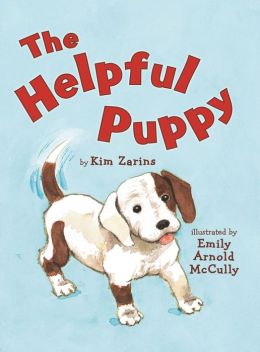
In this charming tale, the puppy travels around the farm, looking for ways to help. He’s too small to pull a cart like the ox or carry riders like the horse. He’s not fast enough to catch a mouse like the farm cat and he couldn’t even give a wake-up call like the rooster. But my students could. They all joined in when I read the rooster’s crow, “COCK-A-DOODLE-DOO”, even the newly minted second graders.
The illustrations prompted lots of stories about the kids’ own animals, like Jayman’s chickens, Joel’s cows, and Olivya’s new Rottweiler puppy, Roxy. In the middle of her description of this energetic addition to their family, a worried grimace crept over her face and Olivya said, “I forgot to brush my teeth!” I wondered where that came from – she is usually good about staying on topic. Before I had a chance to ask, she added, “I brushed Roxy’s teeth but I forgot mine!” (I hope Roxy has her own toothbrush.)
What a helpful child. That brought us back to our conversation about the book and how the animals each did their part to help the farm run smoothly, and how we all do our part to make our school run smoothly. When I asked the kids how they could be helpful around the campus, they had great ideas: pick up garbage from the playground, be nice to other people, if someone gets hurt, help them go to the nurse. Several students quoted our school rules: be kind, be safe, be responsible. Hailey told us she helps by reminding her big brother to follow those school rules, “But he doesn’t listen AT ALL!”
I enjoyed the conversation prompted by this story and we decided we’d all like to be helpful in hopes we’d make the world a better place, whether on a farm, at home or around our school.
My students gave The Helpful Puppy a big thumbs-up.
Our students returned to school this week and it won’t be long before my speech groups start again. Around the campus I saw many new faces. A few had startled-wide eyes and slippery smiles that turned up one moment and quivered into a frown the next. Several parents mirrored the look. I held trembling hands when helping a few five-year-olds find their classrooms for the first time. Apprehension passed over older student faces too, but they were quick to break into a smile when they saw a friend or teacher they’d missed over the summer.
Unlike a classroom teacher, my program doesn’t start on the first day of school so I’m free to help in other ways – like shepherding lost children to their rooms and supervising the early arrivers on the playground. On Tuesday, I was doing just that, and listening to the kids tell about their summer vacations, when we all noticed the sky. It was absolutely stunning. The sun pyramided down through a break in the clouds and lit the rest of the expanse with a silver-yellow glow. I wish I’d had a camera with me, but since I didn’t I’ll share a photo I took last year on my first day back to school. The formations were similar but it was a little earlier in the day when I took this photo.

I asked the kids what they thought the sky looked like and one child said it looked like mountains. Another agreed, “Yes, mountains.” But Maddie pointed toward one long ray of light and said, “That looks like a key.” Those words ignited lively chatter and brought a glitter to the kids’ eyes as we talked of what that key might open and where a door through the clouds might lead. The bell rang before I’d heard enough, but I think I’ll learn more about that magic key in the future. Maddie is a speech student and she loves to create stories.
Now that school is in session, my blog-vacation has ended and I’m happy to be back. I had a productive summer working on other writing projects and scouting out new books to share with my students this year. You’ll be hearing about them in the months to come along with the kids’ reactions. And you might even hear some of their own stories. After all, Maddie found the key to a rich imaginary world and I know she’ll be willing to share it with others.
When I closed my speech room door on Friday I closed a year of speech services at Redwood Elementary. It feels something like closing a good book. I’ll hold these young “characters” in my mind long after they leave our campus. Some of them I’ll see again next year but others are moving up to another school or off to another city. I’ll miss them. But many have left me with mementos to remember them by:
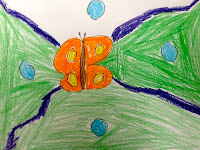

And many authors have left these students with treasures to remember over the summer and into the coming years. About a month ago, one of my second grade students drew a blockish bird with skinny legs and a lot of charm. When I asked Bodie where he learned to draw like that, he said, “You know, that book.”
I didn’t know. But the bird looked strangely familiar and before long I remembered,
Calvin Can't Fly: The Story of a Bookworm Birdie by
Jennifer Berne and illustrated by Keith Bendis. Bodie had drawn a Calvin look-alike! I introduced the story over a year ago and haven’t had it in the speech room since that time. Bodie doesn’t own the book but he hasn’t forgotten the adorable Calvin or the story.
A few months before that when Landen, a young first grader, asked for the book about the really, really loud kid I knew exactly what he was thinking of – Holler Loudly, by Cynthia Leitich Smith, illustrated by Barry Gott. I read that book in the spring of 2012 when Landen was in kindergarten and then donated it to our school library so other kids could check it out. I don’t think I ever saw a child more excited about a book than Landen was when we read this story in his kindergarten year. He felt a special bond with Holler.
The kids often ask for stories we’ve read in the past or ask if they can make up their own, modeled after a favorite book. On Thursday of this week, when the kids were cleaning out their folders, seven-year-old Esmeralda ran across her story, “Creepy Bananas!” A smile spread across her face and her eyes widened in pleasure. She wrote this tale last September after we read Creepy Carrots! by Aaron Reynolds, illustrated by Peter Brown. She plans to add more details this summer so she tucked the pages back into her folder and took it home. I hope I’ll see the revised version next year.
I’m going to follow Esmeralda’s example and work on my own stories this summer. To fully immerse myself in these projects I’ll be taking a blog-vacation, but I’ll be back in the fall. And since, when I write, I like to read the best stories I can get my hands on, I am likely to discover more wonderful books. When school is back in session and the students walk through my door, I’ll be ready with a new supply. And soon thereafter, I’ll have more speech-room stories to share with you.
Have a wonderful summer!
Two weeks ago I featured some of my students’ artwork modeled after Mo Willems’ goslings from
That Is Not a Good Idea! The kids loved making those darling animals almost as much as they loved the book. At the time, I thought I’d pair the story with a nonfiction book about geese but I couldn’t find one appropriate for the five to seven-year-old crowd. I searched on-line through our county library system and, though I didn’t find a perfect match, I found a wonderful book,
Geese by Darice Bailer. It came in to our local library on Tuesday and so this week we were able to compare and contrast facts and fiction.
Darice Bailer’s book was written for grades three and above so it was a bit advanced for my students but I was able to modify the text as I read and the kids had a chance to see beautiful photos of real geese and goslings. They may not be as expressive as Willems’ hatchlings but there is no denying the down covered babies in this book are adorable. I was as enthralled as my students when I turned to page twenty and saw a mother Canada goose with a young gosling nestled on her back, sleeping. The photos in this book inspired several “oh look!” and “how cute” and general sighs of longing to own a fluffy young gosling. They also inspired some imitative drawings. Take a look:

The stately neck of the adult Canada goose caught the eye of several of my students and they were amazed to discover:
“The Canada goose has excellent hearing and can even hear a nearby dog’s tail wag!”
The kids were charmed when I read about the family life of geese – they choose their mates for life and work together to protect their young. When a goose needs to leave her nest, her mate keeps an eye on her and her eggs.
“If a predator approaches the mother goose or the nest, the gander will stand up tall, stretch out his neck, and hiss. He will chase after the intruder and attack it with his wings.”
My students wondered if a gander might chase off a fox like the one pretending to court the goose in Mo Willem’s story. I couldn’t answer with authority but I have my doubts. The hungry fox pictured in Darice Bailer’s book didn’t look like he’d run from an angry gander! On the same page, we read that in 1975, biologists moved Canada geese onto a fox-free island to protect the endangered Aleutian Canada geese from that predator. It sounds like those ganders weren’t taking on any foxes.
With the emphasis on balancing fiction and nonfiction in the Common Core Standards, I was happy to find this appealing fact-filled book. Perhaps next year I’ll find a more age-appropriate pairing for Mo Willems’ book. I hope to find many such pairings and if you have any suggestions, I’d love to hear them.
Knit your Bit was an inspired pick for my language groups this week. Once again, I have our school librarian, Allison Brown, to thank for locating the book and our parents’ club for donating it. With Memorial Day coming on Monday, this World War I story by Deborah Hopkinson was a great choice. Steven Guarnaccia’s illustrations were engaging. They drew my students into the story-world with cheery colors and expressive faces.
A few of the kids tried their hand at illustrating some scenes.
One clever child thought a snowflake-style sock might look like a knitted one from the story.
This historical fiction takes place in 1917 when the United States entered World War I. The soldiers’ clothes weren’t adequate to face the harsh winter conditions so the Red Cross stepped in and alerted the nation. Soon men, women and children across the country picked up knitting needles and clicked away to produce warm clothing for the soldiers. They knitted in classrooms, churches and even on the subway. Knitting clubs formed, knitting bees popped up, and on July 30, 1918 a three-day “Knit-In” was held at Central Park in New Your City. That provided the model for the Knitting Bee of Knit your Bit.
This first person picture book begins with Mikey’s father departing for the war.
When Pop left to be a soldier, I wanted to go with him.
“I’m brave,” I told Pop.
“I know, Mikey,” he said, patting my shoulder. “And you’ll need to be, ‘cause it takes just as much courage to stay behind.”
Mikey discovered a new kind of courage when, on a dare, he joined a knitting competition. It was the Boy’s Knitting Brigade against the Purl Girls. Before the knitting bee battle began, Mikey’s brigade had to learn how to knit. The girls, on the other hand, were experienced knitters. This three-day competition had its ups and downs and zigs and zags but in the end, well, I won’t take you there, you’ll just have to read the book to discover the winner. From my students’ perspective, and mine, the readers of this book are the real winners. It is a touching story and need not be saved for Memorial Day.
Toward the end of the book, a wounded soldier wandered by Mikey struggling with his knitting needles; I struggled to keep my voice from breaking as I read their interaction through a watery-eyed blur (it must have been the pollen in the air).
The author’s note at the back of this book gives historical information and a couple of great websites if you’re inclined toward further research. One tid bit new to me was the discovery that there are still groups of people knitting for soldiers today. You can find out more here:
http://www.nationalww2museum.org/learn/knit-your-bit/index.html
After reading this story, my students talked a little about Memorial Day, but they talked more of how people can help each other. Landen likes to help people learn to play new games, Eleazar helps friends when they fall on the playground, and Darius thinks it’s important to help people get food when they’re hungry. Amelia told me that her sister, Lilah, is doing something similar to Mikey in the story. She and a friend have joined their school-bus driver to knit scarves for the homeless in our community. Like Mikey, they’ve discovered we can all contribute something to the world, we can all “Knit our Bit” and change the texture of our world.
That is Not a Good Idea! Actually, I think it is a very good idea – the book that is – and my early elementary students couldn’t agree more. Mo Willems’ story had them all laughing from the first page when the fox and goose made bug-eyed eye contact.
The fox’s facial expression left no doubt he was enamored with the goose, though his intent toward her was questionable. After showing a group of kindergarten students the illustration on the first page, I asked them what the fox might be thinking. Emanuel thought he was in love and wanted to marry the goose. Brenden said, “ He’s thinking, ‘I want to eat her!’” Later in the story, when the fox invited the goose into his kitchen, Liam blurted, “He’s going to cook her up!”
Throughout the story, adorable little goslings kept popping in, chirping, “That is not a good idea!” The warnings grew as the story progressed and went from one little egg-shaped gosling to six shouting “That is REALLY, REALLY, REALLY, REALLY NOT a good idea!” Whenever I turned a page to the warning, my students read the words along with me with great enthusiasm.
The kids loved this book and they especially loved the goslings. Every time they appeared on a page, all the students started chattering at once, pointing to the details – bow tie, glasses, facial expressions, flurry of wings. They were so charmed by the illustrations they wanted to make some of their own. Take a look at the work of these budding artists.
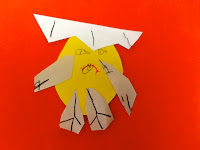
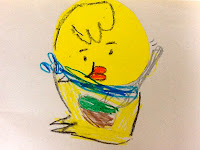
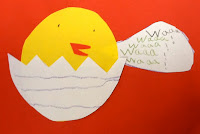
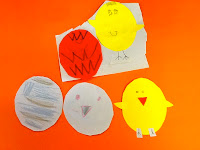
We had a sprinkling of rain the day after I read the book and one of my speech students broke into a run as he neared my room (and broke a school rule in the process.) He slipped on the metal ramp and rushed into my room rubbing his elbow. As he came in he said, “That was REALLY, REALLY, REALLY not a good idea!” He was right. And I think I’m right when I say it was REALLY, REALLY, REALLY a good idea to introduce Mo Wilems’ latest book to my students.
With Mother’s Day around the corner, our students have been busy painting flowers, crafting cards, and purchasing plants for the important women in their lives.
 |
| Art from Marcia Douglas' Kindergarten class |
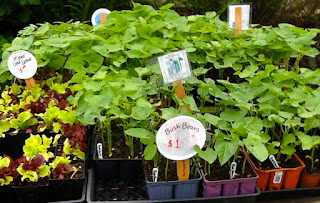
Lucky for these kids, we have a well-stocked garden on the school grounds and a teacher, Julie Castillo, who passes along her knowledge and love of plants. This week she introduced the students to “Lady Bug City” where the children went in search of a friendly ladybug or two.
After visiting the garden on Thursday, my students came to speech bubbling with information about their plant purchases so I chose a book to fit the theme: The Curious Gardenby Peter Brown.
The book begins on a dreary note with a dreary, smoke-filled city.
“There once was a city without gardens or trees or greenery of any kind. Most people spent their time indoors. As you can imagine, it was a very dreary place.”
But a little boy in the story, Liam, loved the outdoors. He went exploring one drizzly day and discovered a “lonely patch of color” on an abandoned railway. The plants were dying and in need of a gardener. It wasn’t long before Liam became that gardener and the dying plants became a garden – a very curious one.
“Most gardens stay in one place. But this was no ordinary garden. With miles of open railway ahead of it, the garden was growing restless. It wanted to explore.
The tough little weeds and mosses were the first to move. They popped up farther and farther down the tracks and were closely followed by the more delicate plants.”
My students responded with enthusiasm to the story and they surprised me with gasps of wonder when I turned a page and they saw the transformation that plants made to a dilapidated building, an old wooden dock and a concrete parking lot. Lush greens spilled over rooftops and vibrant colors sprouted across the page. By the end of the story, there were no doubts – a garden can bring beauty even to the drabbest of places. This curious garden brought beauty to drab lives, too, as people of the town came out-of-doors and tended gardens all around the city.
On Friday, one of my autistic students showed me a three-inch manila envelope full of sunflower seeds she’d collected from our school garden. I assumed she was taking them home but after she left my room, I saw her outside the window, bent over my weed-filled barrel. She cleared out a mat of dried chickweed, emptied the envelope, and tucked soil around her gift.
Our Redwood students enjoy learning about plant life, insects, and gardening, but I think they are discovering something more – a variety of ways to bring beauty into our world.
Back in December, with the holidays rapidly approaching, our school librarian, Allison Brown, got busy and handcrafted holiday paper stars to raise funds for our library. She sold them at our school and around the community for just $5.
The money added up and soon she had a total of $1,160 dollars. With those funds she purchased 60 non-fiction animal books for the library shelves. To commemorate their arrival, Ms. Brown and children from three second grade classes gathered in front of our school for a photograph. Each child is holding up one of the 60 brand new library books.
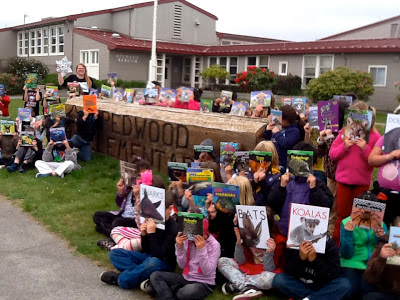
The students aren’t the only ones who benefited from Ms. Brown’s labors; I snagged one of the new books to use with a language group this week: Flying Lemurs by Willow Clark.
My speech kids were divided as to whether the animal was really cute or really ugly, but they all agreed the flying lemur, or “colugo,” was fascinating. To begin with, though they are called flying lemurs, they don’t fly (they glide) and they are not actually lemurs.
“They are called lemurs because their faces look like lemurs’ faces.”
This shy, large-squirrel-sized mammal rarely leaves the trees in the rainforest where they live. They simply glide through the air, moving from tree to tree. Their camouflaging fur looks similar to the lichen growing on trees in their habitat, but still, they have to keep an eye out for predators such as Philippine eagles. When I read the page about predators to a group of girls, they gasped in unison and Esmeralda pulled the book close, as if to protect the vulnerable colugo.
This book is peppered with new vocabulary words, all in bold print.
“Both kinds of flying lemurs are arboreal, meaning they live in trees. Just about everything they need is found in the treetops of the tropical rain forest habitats in which they live. Flying lemurs are nocturnal. This means they are active mostly at night.”
If a child misses the meaning of a word within the text, or simply wants to review a new vocabulary word, there is a handy glossary in the back of the book.
Our students are lucky to have a growing library. They eagerly file in each week to choose a special book to carry home. Some choose nonfiction, like Flying Lemurs, and these kids journey through the pages to places in the world they are unlikely to visit in person – or perhaps they will. Perhaps the book will ignite a dream and one day they’ll travel to new regions and new personal horizons. These children may become our future biologists, anthropologists or teachers.
Some kids gravitate toward fiction and when they find a good story they often find a character who will become a companion, housed in their imagination for years to come. They may also experience the first stirrings of a desire to create characters and stories of their own. I’ve seen it repeatedly in my speech room. After listening to a good story, the kids often beg to write one of their own.
I’m grateful to Allison Brown who funded and selected the 60 new books now on our shelves. She continually finds creative ways to expand our library and introduce our students to great books. I’m also grateful to librarians, writers, parents, and teachers everywhere who instill a love of books in today’s children. We will all reap the benefits.
Pirates vs. Cowboysbrought some old fashioned fun to the speech room this week. My students have been in love with Aaron Reynolds’ storytelling talents ever since I read his book Creepy Carrots last October. This latest book has further established his place in their hearts. And the kids loved David Barneda’s engaging illustrations, especially the expressive pirate crab and cowboy cactus.
When Burnt Beard, the Pirate, swaggered into Old Cheyenne, the pirate-cowboy showdown began (and so did the student-giggles.) The kids had a hard time deciphering what those rascally pirates and cantankerous cowboys were trying to say to one another. It was no wonder that cowboy Black Bob McKraw didn’t realize he was not being insulted when Burnt Beard said,
“Ahoy there, me hearties! Be ye knowin’ where we’d be findin’ a fair scrub and a swish?”
Black Bob rode up real close to Burnt Beard. “What’d you call us, ya yellow-bellied varmints?” was Black Bob’s reply. “Why don’t ya mangy hornswogglers beat a trail of dust right back out of Old Cheyenne!”
My students couldn’t figure out what those colorful characters were trying to say but they laughed at the sound of these words and then took a guess at their meaning. We had a nice conversation about communication and the importance of the words we use. When I read,
None of them cowboys spoke Pirate, and none of them pirates spoke Cowboy! And that’s a recipe for trouble.
Joden called out, “None of those cowboys.” And after listening to,
“You rootin’-tootin’ critters better head fer the hills, or yer gonna get horsewhipped and hogtied like there’s no tomorrow!”
Haley said, “That means get out pirates!”
This story may not model appropriate grammar or typical vocabulary but it inspired my students to notice both and it opened a good discussion on communication. It also inspired some creative endeavors. In a kindergarten group, one student dictated his own story, full of thieving pirates, stolen animals, and a treasure – one puppy, bright gold, the color of a gold-covered chocolate coin.
I asked a group of first grade students to replace “pirates” and “cowboys” with different characters and we had an enthusiastic brainstorming session. Before long, they began creating their own stories. Zayd told a tale of Ninja vs. Robots, Madisyn started one about Ballerinas vs. Fairies, and Joden (ever the comedian) began a tale of a Dog-person vs. Cheetah – “a big one doing the happy dance.” I’m curious to see how that one comes out. Actually, I’m curious to see how they all come out; they are off to a good start. I feel privileged to see such creative minds at work and to have the opportunity to introduce them to a good story, like Aaron Reynolds, Pirates vs. Cowboys.
This past week our schools have been closed for Spring Break and on Tuesday I hiked to a nearby waterfall for a time of quiet contemplation. I’ve been extremely busy for the last month – reports and meetings at work, new financial responsibilities at home, and self-imposed writing and blogging “obligations.” And so, in keeping with my “intention” for this year (think resolution but with less guilt), which was to strive for balance, I decided to tip the scales in the opposite direction and enjoy a time of leisure.
There is a lovely waterfall in Russian Gulch State Park, not far from where I live. I drove inland to catch a shortcut and hiked through the redwoods, breathing in the scent of new spring growth. Lush fog-tended ferns lined the trail and wild rhododendrons reached their spindly branches through a canopy of Douglas fir and redwoods.
Western Trillium brightened the forest floor and the path was padded with last year’s needles and bark.
I brought my iPad along so I could take a few pictures. (Perhaps one day I’ll buy a camera.) I wanted a few shots for this blog post but I planned to slip the iPad into my backpack and ignore it for the most part. After all, the idea behind my hike was to retreat from responsibilities – self-imposed or otherwise. But I got wrapped up in taking pictures and thinking of how I might use them on my blog or with my students. That made me start thinking of school and the reports that I’ll need to write next week. My mind skipped around between jobs to do at home and work, books I planned to read, friends I wanted to spend time with, and projects I planned to work on during my break.
When I arrived at the waterfall, I was delighted to find I had the place to myself. There are a couple rough hewn benches and I settled onto one, then grabbed my iPad to snatch a few pictures of the falls.
I moved in for a close-up and the roar of the water spilling over rocks and around fallen trees was almost musical.
No, actually it was
very musical. At first I thought my mind was playing tricks on me, but no, it was actual music I was hearing. I was disappointed, thinking my solitude was about to end. I assumed there were hikers approaching with a blaring radio but I was wrong. When I held the iPad up to get one last shot, the music grew louder. It was coming from my iPad.
Now I must tell you, I’ve never listened to music on my iPad before. I have over one hundred educational apps so I reserve the space for those and for photographs. But somewhere along the line, I must have downloaded this one album, Come Darkness, Come Light by Mary Chapin Carpenter. And somehow, with the glare on my iPad I didn’t notice that, out of my one hundred-plus apps, my finger hit the music icon, and started playing the third song on this album, “Still, Still, Still.” Those were actually the only words I could hear, “Still, still, still, (roar of water,) still, still, still.” It was a message I needed.
My scampering thoughts had crowded out any chance for contemplative ones, but that word, “still” stopped the internal whirr.
I walked over to the bench, turned off the music and slipped the iPad into my backpack. I sat for a moment before pulling out my journal. When I opened it, the first thing I saw was a quote I’d copied several months ago,
“Be still and know that I am God.” Psalm 46:10.
That was enough. I didn’t need to read further. I wrote a few notes in my journal and tucked it away so I could sit and enjoy the stillness.
Whatever your belief system, whatever your religion or lack thereof, we all need times to be still and enjoy the beauty of nature, time to reflect so that we can bring a richness to our relationships with others. Our students, children, families, readers and friends will all benefit when we nourish our souls.
Spring Break is almost over but my hope is that I’ll carry some of this stillness into the coming weeks. And I hope the same for you.
Poem in Your Pocket Day falls during our Spring Break this year. I couldn’t let the day, April 18th, slip by without bringing it to the attention of my students, so we started celebrating a bit early. I brought out the “pocket” I created last year and my students helped fill it with poems.
Yesterday, they emptied the pocket and shared poems with classmates. They carried them in their pockets as they left school on Friday and who knows, they may have them in their pockets again on the eighteenth.
When I looked for poems to share with the students, I found some fabulous ones in the book, National Geographic Book of Animal Poetry: 200 Poems with Photographs That Squeak, Soar, and Roar!
J. Patrick Lewis, U.S. Children’s Poet Laureate, edited this book. I’m grateful to our school librarian, Allison Brown, who loaned me her personal copy. From Jack Prelutsky to Emily Dickinson, there is a poet and poem for every taste. The focus on animals appealed to my students, especially with the accompanying photographs - they were spectacular! What child wouldn’t love a photograph and poem about a piranha or a panther? There is even a poem by one of my favorite poets from the past – Christina Georgina Rossetti.
HURT NO LIVING THING
Hurt no living thing:
Ladybird, nor butterfly,
Nor moth with dusty wing,
Nor cricket chirping cheerily,
Nor grasshopper so light of leap,
Nor dancing gnat, nor beetle fat,
Nor harmless worms that creep.
The kids were enthusiastic about our pocket activity and loved claiming a poem as their special one for the coming week. They left inspired. And who knows what poetry may come from these students in years ahead. I’m hopeful, on some future “Poem in Your Pocket Day,” I’ll be carrying one of their creations.
Last Monday I had a late meeting after work, and though I was eager to get home, I couldn’t help but stop, pull out my iPad and take a picture of the sky.
The scene ignited poetic sentiments in me and I thought it might do the same for others. As you probably know, April is national poetry month. I decided to use the photo in a poetry project with my students. Since the majority of these kids are between the ages of five and seven, I started my project by introducing them to poetry. Some of them didn’t know the meaning of the word. A Whiff of Pine, a Hint of Skunk: a forest of poems, by Deborah Ruddell, illustrated by Joan Rankin, made a charming introduction. It captivated my students.

It’s easy to fit poetry into speech therapy sessions. For those working on articulation, I find alliterative poems that use the student’s target sounds. And for those needing help with phonemic awareness, rhyming words, and vocabulary, poems are ideal. One activity that builds listening skills was especially popular with the kids – I read from Deborah Ruddell’s book without showing the illustration and asked the students to try to figure out what animal I was reading about. I didn’t tell them the title before I read Biography of a Beaver:
Bucktoothed Cleaver
Tree Retriever
Building Conceiver
True Believer
Waterproof Weaver
Overachiever
Roll-Up-Her-Sleever-
Hooray for the _________
I left off the last word and the kindergarten students had no problem filling in “Beaver.” We had quite a vocabulary lesson with this poem as I read each line. I showed them the illustration after they’d guessed the animal and they were very pleased they’d figured it out on their own.
Another poem I used in this activity was The Night Owl. These sometimes-squirmy-kids listened attentively to the poem, which had become a riddle for them to solve.
Somewhere in the forest
he is practicing his hoot,
but you’d swear that he’s rehearsing
on a spooky-sounding flute-
working on his timing
and his quavery technique,
patiently perfecting
the position of his beak.
Once again, they guessed the animal. They leaned in close and poured over the illustration when I turned the book so they could see.
With a poetry lesson behind them, I showed my students the picture I’d taken of the clouds. They were intrigued. I asked them what they thought it looked like, how it made them feel, what it would sound like if it made a noise and let their imaginations take off. I jotted down their answers and comments, collecting them from different speech groups throughout the day. Then I typed them up, cut them apart and the following day, had students put them together to form a poem. Speech groups participated at different times throughout the week and a couple of my middle school students threw in their advice as well. Take a look at their creative composition:
Up in the sky there’s an ocean.
Whoosh
The waves are breaking.
Kshhhhhh, kshhhhhh
They make me want to swim and splash
or learn to surf.
I wish I could surf in the sky.
I would surf to South America.
The waves could take you to Arizona.
They could take you anywhere.
If you saw the cloud-waves at sunset,
they’d look like they were made of sun.
If the sky can make waves,
maybe it can make beads.
Maybe they’ll fall
and I’ll catch the beads to make a necklace
and wear the sky around my neck.
I wish I could ride a ship on the cloud-ocean.
I’d ride those waves,
I’d ride them all the way to Mexico.
Ola Amigo!
But are they cloud-waves?
Or is it one long, long,
Dragon?
Easter has been on my mind this week and it has been on the minds of my students as well. They love talking about their plans. Skyler informed me that she is going to feed her fish, Roxie and Goldie, special Easter food. She plans to hide it, so her fish can hunt for the special treat. Olivya’s Dogs are going to get Easter eggs. She painted them at home – blue and green for Quest and pink and purple for Roxy. Olivya is going to hide the eggs for her dogs but her cat Luna will just get cat food. She scratches.
Not all kids celebrate Easter, so I steered the conversation away from the subject during many of my speech sessions and for my language groups, I read a book about new life in the animal kingdom: My First Day, by Steve Jenkins and Robin Page.
It begins with a question,
“What did you do on your first day – the day you were born?”
A kiwi starts off with his answer.
“On my first day, I spent hours kicking my way out of my egg. As soon as I hatched, I was ready to take care of myself.”
This charming book introduced wood ducks, sea otters, muntjacs and megapodes. I had never heard of some of the animals in the story, nor had my students. All the creatures fascinated the kids, but they were amazed when I read about Darwin’s frog.
“On my first day, I hopped out of my father’s mouth. When I was a tadpole, he kept me safe in a special pouch in this throat. But once I became a frog, it was time to be on my own.”
My students weren’t the only ones to gather new information when we read this story; many of the animal facts were new to me. At the back of the book the author provided more detailed information about the animals and their habitats. That inspired my students to further research and so we used the Internet on my iPad and found some photographs of the animals.
All this talk of animals reminded Noah of his farm and his pig. He told us the pig made a huge nest of hay, just like a chicken nest, only bigger. Noah figures his pig learned the technique from the chickens because they live together. Nests brought the conversation back to eggs and that brought us back to Easter. His chickens, it seems, lay extra eggs on the holiday. I haven’t been to Noah’s house so I can’t say for sure, but it wouldn’t surprise me in the least. After all, Easter is a time full of new life and new hope. That hope obviously extends to Noah’s chicken yard.
This week I read Infinity and Me by Kate Hosford to a few speech groups. It is beautifully illustrated by Gabi Swiatkowska.
At first I was hesitant to read it to the kindergarteners. I thought they might not be ready for such an abstract concept but I needn’t have worried. Before reading, I asked the kids if they knew what “infinity” meant. They didn’t. But by the end of the book, they had a pretty good idea.
The story begins,
“The night I got my new red shoes, I couldn’t wait to wear them to school. I was too excited to sleep, so I went outside and sat on the lawn. When I looked up, I shivered. The sky seemed so huge and cold.
How many stars were in the sky? A million? A billion? Maybe the number was as big as infinity.”
Uma, the contemplative child with the new red shoes, grappled with this concept and looked for enlightenment by asking her friends, grandmother, and teachers how they imagined infinity. Her friend Charlie told her infinity is “a giant number that keeps growing bigger and bigger forever.” After hearing from the others, Uma realized something. “It was hard to talk about infinity without talking about ‘forever.’” She started to wonder what she’d like to do forever and came up with a lot of possibilities like having recess forever, staying eight years old forever, or licking an ice-cream cone forever. My students got rather excited about some of those possibilities and added a few of their own.
When I asked the kids what they thought about infinity, Liam said, “If you ate infinity potatoes, you would get bigger and bigger forever.”
Enrique said, “Infinity minutes is a long, long, long, long, long time.”
Joden wanted to know, “What’s infinity plus infinity?” (I’ll have to consult a mathematician on that one.)
Zayd asked, “Does Googol come before infinity?” And to think I was worried about introducing this complex concept to my students!
Toward the end of the story, when Uma spoke of her grandmother she said,
“Right then I knew – my love for her was as big as . . .”
I didn’t need to finish the sentence. The kids finished it for me.
Afterward, Liam said, “Do you know how big LOVE is? It’s as big as this.” He spread his arms out in front of him, edging them wider and wider, until he reached around his back and clasped his hands together, leaving all of infinity outside his circled body, snug in a cocoon of unending love. Liam has great insight for a five-year-old. Actually, I’d say he has great insight for one of any age. He is beginning to grasp the concept of infinity and something more besides.
View Next 25 Posts




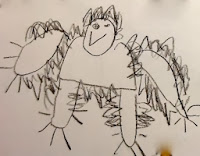
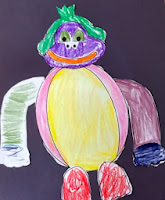
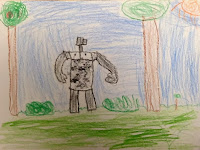

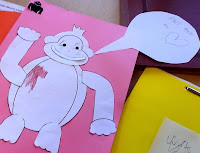
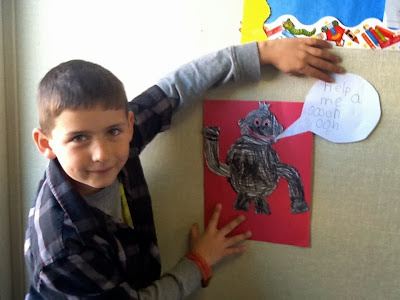
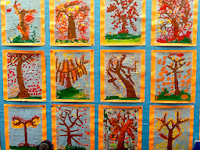











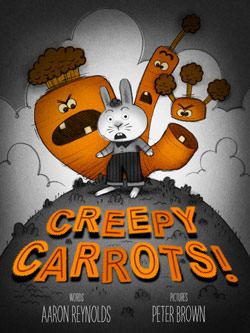
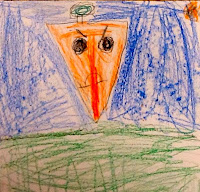
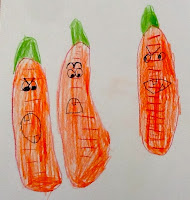
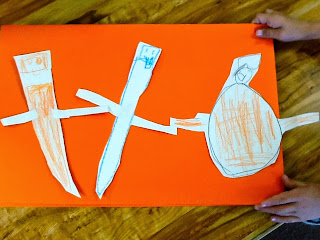


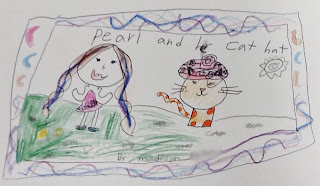




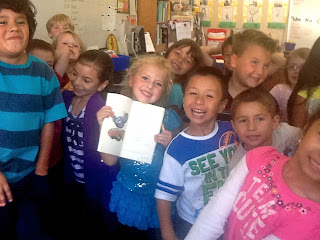

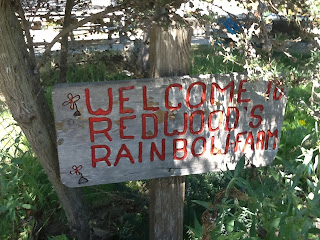

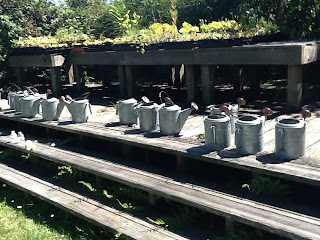



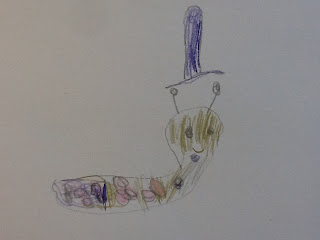

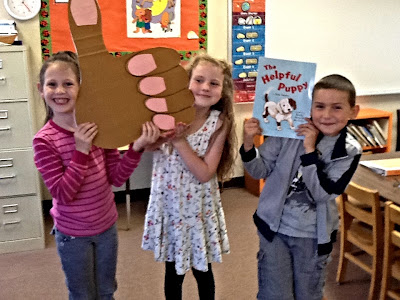






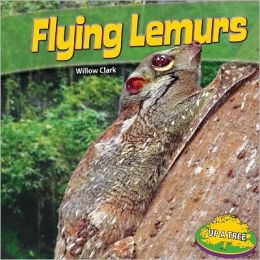







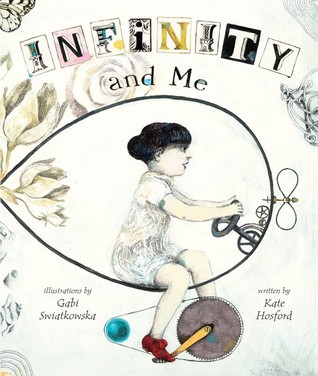
This sounds like a wonderful book. I love the photos of your school garden. Thank you for sharing.
Thank you for dropping by.
We didn't have a school garden, but we did have the Bonny Brae! It was basically the woods with a walking path, but it sounded fancy ;)
All our neighbors have gardens, so luckily Max gets to learn from theirs. I have two black thumbs.
Thanks for linking into the KLBH!
The Bonny Brae sounds wonderful, even if it is just a path through the woods.